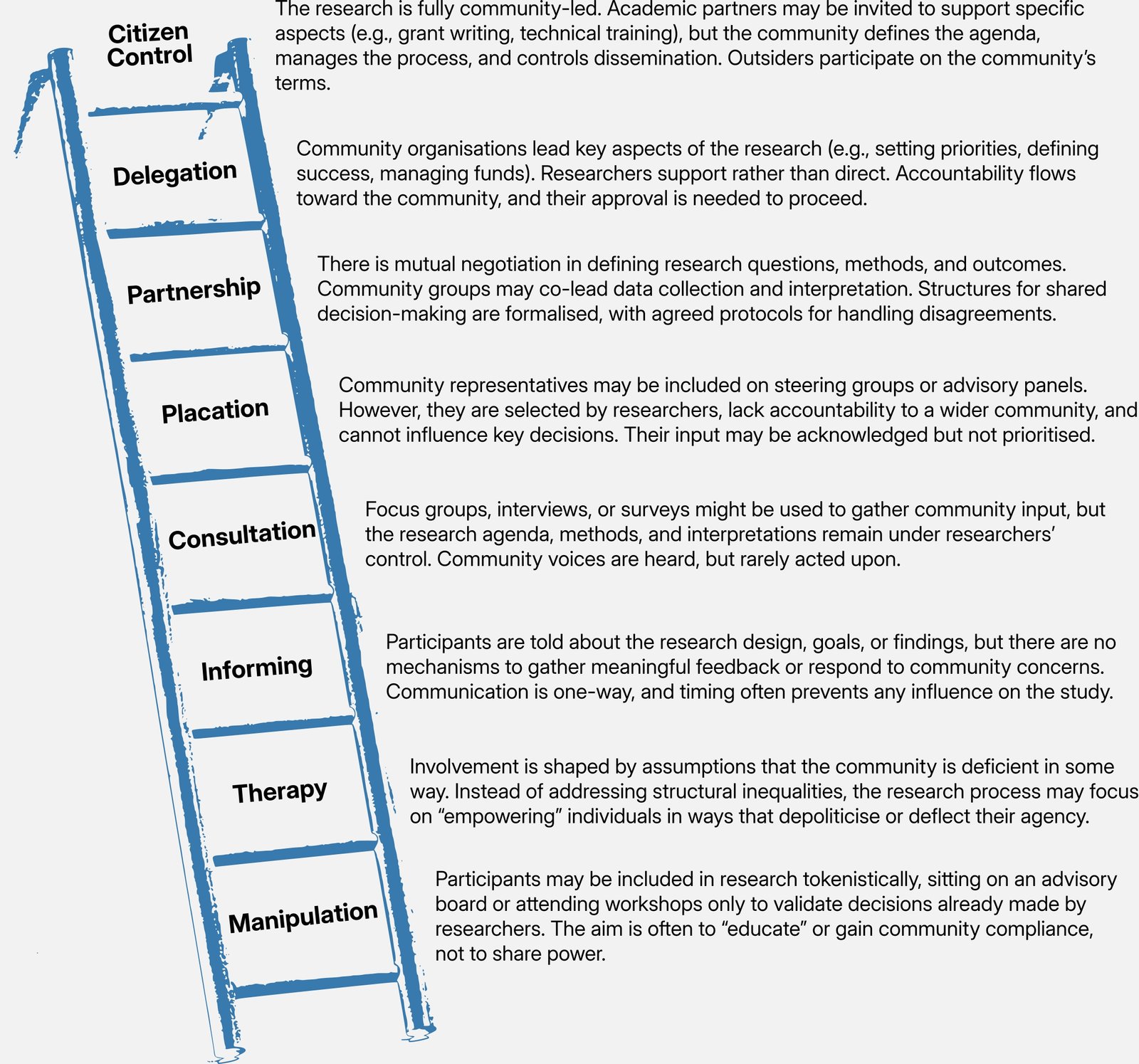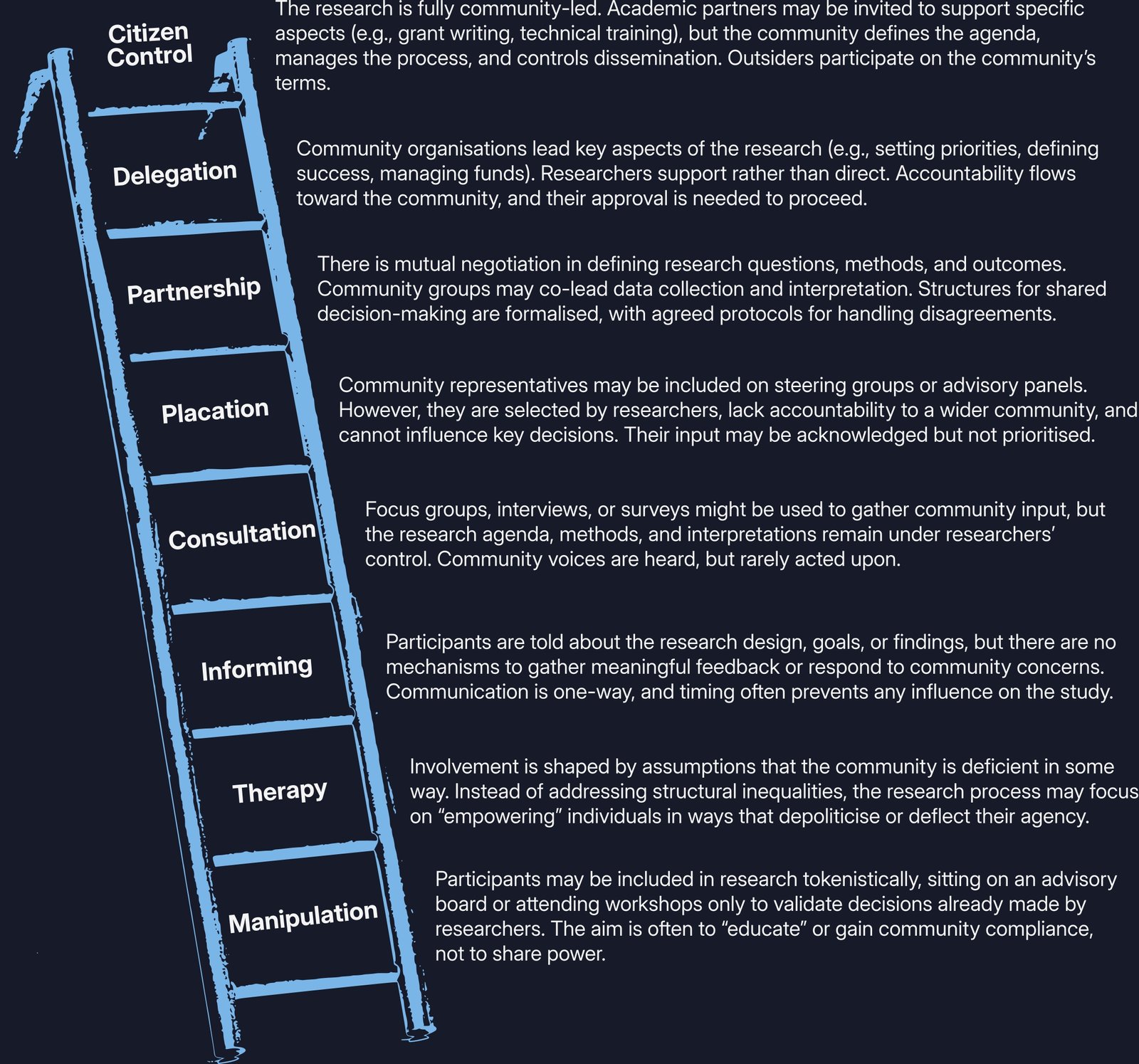Introduction
Research impacts people in both direct and indirect ways. Direct impacts include things like medical interventions which are explicitly the focus of a research project. Indirect impacts include cases where research may enable new applications of technology which were not anticipated by the original work. Research communities are often unrepresentative of the global population and therefore many perspectives, needs, and interests can go unappreciated or unaddressed. As such, researchers that lack insight into the lived experiences of those impacted by their work risk producing research that is incomplete, biased, or less applicable to diverse real-world contexts.
Co-creation is a collaborative approach that actively involves and gives power to multiple stakeholders—such as researchers, practitioners, policymakers, community members, and service users—in the research process.
The Parable of the Blobs and Squares
The Parable of the Blobs and Squares is a light-hearted animation that explains the need for co-creation. It is oriented more towards the relationship between government and society but is equally relevant in research context.
Unlike traditional research models where knowledge production is primarily driven by academics, co-creation fosters mutual learning and shared decision-making. This approach acknowledges that diverse perspectives and expertise contribute to more relevant, impactful, and socially responsible research outcomes.
Co-creation will look different depending on which research discipline(s) you belong to and there are different levels to which people outside the research community may be involved. Arnstein’s ladder [1] provides a useful framework for thinking about different levels of involvement. It distinguishes between levels on the basis of how much actual input is given to people. For a research project to be co-created it would need to sit at the highest rungs of the ladder.
The major barrier to co-creation in research is time. Firstly, coordinating and sharing decision-making between multiple partners presents a logistical challenge. Secondly, and most importantly, when co-creation is done correctly there will more-than-likely be unforeseen changes that need to be made. This a natural consequence of bringing diverse perspectives together and in some ways is the main purpose of co-creation. These pressures mean that sufficient time needs to be allocated to all stages of the research process. Even better, we should be prepared to be flexible with our timelines to accommodate changes to the project. As such, time and resources for co-creation need to be built into the project from the very first stage, not as an afterthought.
Achieving equitable and comprehensive research outcomes depends on seeking perspectives from beyond the immediate research community. Co-creation addresses this by actively involving multiple stakeholders, ensuring research is more relevant and socially responsible. However, for co-creation to be meaningful, it must go beyond token inclusion—requiring shared decision-making, flexibility, and sufficient time. This shift challenges traditional research models but ultimately leads to stronger, more applicable knowledge.
Activity
See page 19 of the workbook.
Have a look at the UKRI key principles for co-creation. Then, use Arnstein’s ladder to evaluate a research project you are involved in and decide which level it sits at. For each level above where it currently sits, write down how the project would need to change to bring it to that level.
Think about whether these changes are feasible for the current project. If not, why not? Write down some ways you could make sure the next project you are involved with can be as high up the ladder as possible.
Case Studies
Practical Steps and Tools
Use Arnstein’s ladder to evaluate and frame your research project to ensure you are actively involving people outside of research.
However you incorporate other people into your research practice, the key principle is to enact equitable partnerships:
- Be honest and open in communication.
- Provide people with adequate resources to freely participate. This may mean transport costs, childcare arrangement, translations services, etc.
- Give partners proper agency and power in decision making. Set out in advance how decisions will be made and what role each party has to play in these.
- Practice reflexivity to be aware of real or perceived power imbalances – assess these critically and ask: do they need to be there, what will their effect be?
References and Further Resources
The Black South West Network have developed a A Charter for Co-Production Through an Anti-Racist Lens
L’Atelier des Jours à Venir is a research and teaching cooperative that engage in co-created and reflexive research projects.
The Co-Production Collective has a wide range of resources available, from case studies to guidance.
The Perivoli Africa Research Centre is a University of Bristol initiative aiming to promote equitable partnerships between the global north and African research institutions.
In the video ‘Art for social change’, Rebecca Yeo discusses how her project engaged with people with different levels of ability to make it more accessible.
The poster ‘Fair and mutual research partnerships: 10 principles for community-university partnerships’ by Common Cause Research sets out 10 principles for community-university partnerships.
The National Institute for Health and Care Research (NIHR) have a wide range of resources and information for co-creation, also known as patient and public involvement (PPI):
The James Lind Alliance is a non-profit that works to support healthcare researchers to better understand the needs of patients and carers. They list their top 10 priorities for research, by condition, here.

